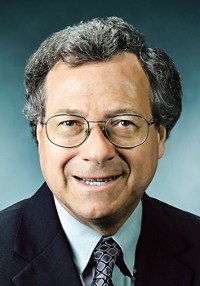Advertisement
Grab your lab coat. Let's get started
Welcome!
Welcome!
Create an account below to get 6 C&EN articles per month, receive newsletters and more - all free.
It seems this is your first time logging in online. Please enter the following information to continue.
As an ACS member you automatically get access to this site. All we need is few more details to create your reading experience.
Not you? Sign in with a different account.
Not you? Sign in with a different account.
ERROR 1
ERROR 1
ERROR 2
ERROR 2
ERROR 2
ERROR 2
ERROR 2
Password and Confirm password must match.
If you have an ACS member number, please enter it here so we can link this account to your membership. (optional)
ERROR 2
ACS values your privacy. By submitting your information, you are gaining access to C&EN and subscribing to our weekly newsletter. We use the information you provide to make your reading experience better, and we will never sell your data to third party members.
Education
Curriculum Resources: A Textbook For Safety
by Jyllian N. Kemsley
June 28, 2010
| A version of this story appeared in
Volume 88, Issue 26

Robert H. Hill Jr., a program manager for the Atlanta Analytical Services group of Battelle Memorial Institute, says that if you look into the root cause of laboratory incidents, they all have one thing in common: “A lot of it is just ignorance,” he says. “A lot of people are just not taught lab safety to any significant extent in college.”
After talking with many people about ways to address the lack of safety awareness, he came across someone who said, “You know, if I had a resource, if it was in a textbook, I would probably teach it,” Hill says.
COVER STORY
Curriculum Resources: A Textbook For Safety
Five years later, Hill and Wittenberg University chemistry professor David C. Finster have written just such a text, which will be out next month. Called “Laboratory Safety for Chemistry Students,” the book is intended to be a four-year text that can be used across all courses of a chemistry program. Written in a modular approach, sections can be used together or independently of each other as appropriate for a particular lab or project, Hill says.
Instructors can also select from more introductory to more advanced information, depending on the class. Special topics titled “Chemical Connections” briefly present some subjects commonly taught in chemistry courses to relate them to various safety matters.
Finster and his colleagues at Wittenberg, in Ohio, previewed the textbook in their courses this past year. Chemistry professor Justin B. Houseknecht used it extensively in the spring with an advanced organic chemistry lab. “It was really very easy” to incorporate sections of the book into the curriculum, Houseknecht says. When the students were to work with formaldehyde, he assigned the section on carcinogens for prelab reading; for cyclopentadiene, the students got a section on lab ventilation systems. Houseknecht also had students take the quizzes that Hill and Finster wrote to go with the text.
“It gave us a good platform upon which to talk about safety,” Houseknecht says. “We would have had very little reading in the past—maybe a very short paragraph on a topic in the lab manual. This semester was much more systematic, and I’m much more confident that the students were exposed to the things they needed to know.”
Finster himself used a similar approach in the fall with his general chemistry course, having students read the section on corrosives, for example, when they were going to use nitric acid. In the spring, with an upper-level inorganic class, he had each of the students select an advanced section to read and then write a quiz on the material for their classmates. “It was a good exercise because it made them read the sections differently,” he says, and also because some students ended up choosing sections that they might not have read otherwise, such as those on process safety or vacuum systems.
Finster hopes that faculty at other schools will also find the text useful, and he’s curious to hear how people integrate it. “The idea of the book,” he says, “is to lower the activation energy barrier as much as possible for different instructors who want to do different things.”




Join the conversation
Contact the reporter
Submit a Letter to the Editor for publication
Engage with us on Twitter